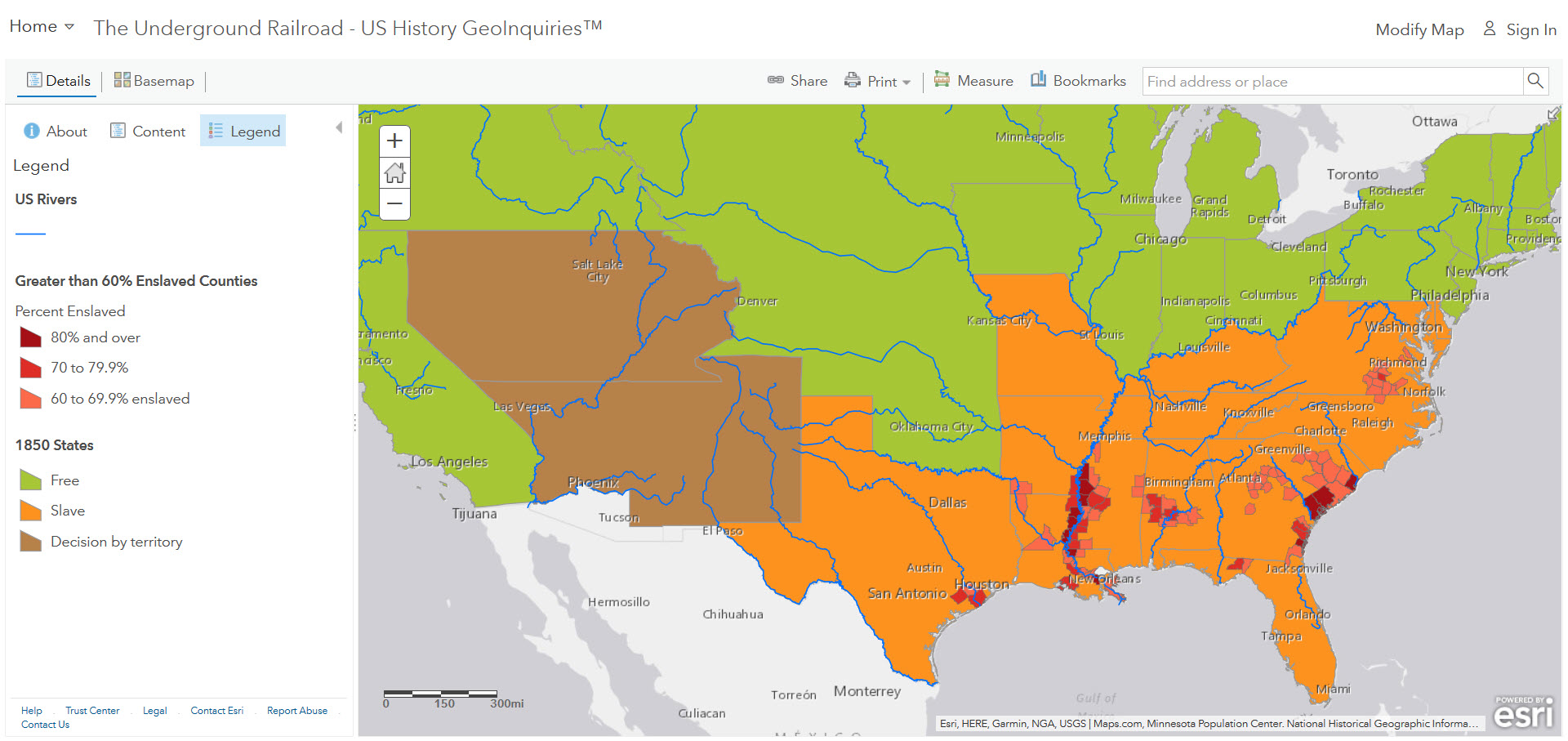
Where was slavery practiced in the United States in 1850?
Step 1: Go to the ArcGIS Online map, The Underground Railroad, and explore the map.
Step 2: With the Details button underlined, click the button Show Legend.
- Which states allowed slavery? Which states did not?
- Which areas were the most enslaved?
- What factors influenced these areas being mostly enslaved?
Where did the big river meet the little river?
Step 3: Click the button, Show Contents of Map.
Step 4: Click the button, Bookmarks. Select Underground Railroad.
Step 5: Turn on the layer, Map Notes. Open and read the Map Note located in Northern Michigan.
- Why did rivers make good escape routes?
- Which rivers do you think are the big river and little river?
Step 6: Filter the US Rivers layer so that FOLLOW is set to YES. The filter button is only available for certain map layers. With the Details button underlined, hover over a layer name. Click the Filter button. Set the Filter parameters.
- Why was this intersection a key destination?
Step 7: Remove the filter.
Where were the Underground Railroad stations located?
Step 8: Turn on the Notable Underground Railroad Stations layer.
- What patterns do you notice about the stations’ locations?
- Which stations were located farthest north?
Step 9: Click the two purple stations.
- What types of stations were these, and what does this reveal about the Underground Railroad?
How did runaway slaves travel to freedom?
Step 10: Turn on the layer, Routes.
- What patterns do you notice about these networks?
Step 11: Turn off the layer, Stations.
Step 12: Turn on the layer, Windsor.
Step 13: Use the Measure tool to answer the questions button.
- Most runaway slaves came from border states. Why?
- How far is the Ohio River from Windsor?
- How far is the Ohio River from the mouth of the Mississippi River?
- How far is Windsor from the mouth of the Mississippi River?
- Besides distance, what other factors made escaping the Deep South difficult?
Why was the Fugitive Slave Act of 1850 passed?
The Fugitive Slave Act of 1850 made it a crime in the United States to assist runaway slaves.
- How did the Underground Railroad contribute to Southern lawmakers calling for a stricter fugitive slave law?
- What impact did the stricter Fugitive Slave Act have on the Underground Railroad?
